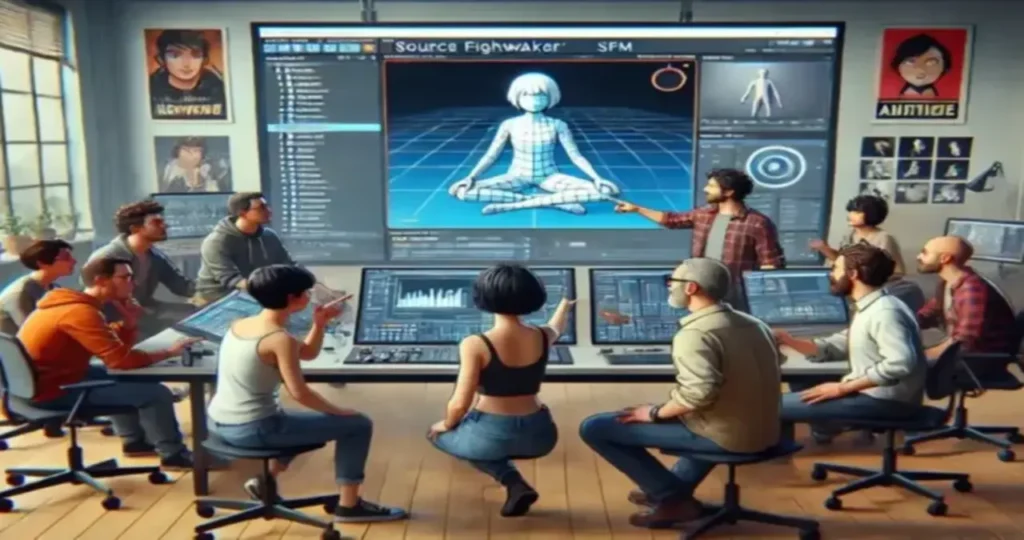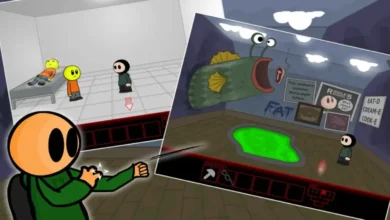SFM Compile Club: Why Your SFM Project Takes So Long to Compile (And How to Fix It)

Introduction
If you’ve ever worked with Source Filmmaker (SFM), you know that compiling a project can sometimes feel like watching paint dry. Whether you’re an animator, filmmaker, or SFM hobbyist, long compile times can disrupt your workflow and kill productivity.
Welcome to the SFM Compile Club, where we break down the reasons behind slow SFM compiles and provide actionable solutions to speed up the process. In this guide, we’ll explore:
- Why SFM projects take so long to compile
- Common bottlenecks that slow down rendering
- Optimization techniques to reduce compile times
- Advanced tweaks for power users
By the end, you’ll have a faster, smoother SFM experience—no more endless waiting!
Why Does SFM Take So Long to Compile?

Before fixing the issue, it’s essential to understand why SFM compiles can be slow. Here are the most common culprits:
1. High Model & Prop Complexity
SFM has to process every model, prop, and texture in your scene. The more detailed they are, the longer the compile time.
- High-poly models (e.g., custom TF2/SFM workshop assets)
- Excessive particle effects (smoke, fire, sparks)
- Too many dynamic lights & shadows
2. Large Map Sizes
If your scene takes place on a huge custom map, SFM has to load and compile every brush, texture, and light source, increasing processing time.
3. Too Many Animation Keys
Every movement, facial expression, and camera angle adds keyframes. The more keys, the more calculations SFM must perform.
4. Insufficient Hardware
SFM is CPU-bound, meaning it relies heavily on your processor. Compiles will take longer if you’re using an older or weaker CPU.
5. Software & Settings Issues
- Outdated SFM version
- Incorrect compile settings
- Background programs hogging resources
How to Fix Slow SFM Compile Times
Now that we know the causes let’s dive into proven fixes to speed up SFM compiles.
1. Optimize Your Models & Props
- Use lower-poly models where possible.
- Disable unnecessary physics on props.
- Replace complex particle effects with post-processing (if possible).
2. Simplify Your Scene
- Remove unused props (they still get processed).
- Use fog/depth of field to hide distant details.
- Break large scenes into more minor sequences and compile them separately.
3. Reduce Keyframe Overload
- Delete redundant keyframes (SFM sometimes auto-adds extra keys).
- Use the Graph Editor to smooth animations instead of adding more keys.
- Bake complex animations if reusing them.
4. Upgrade Your Hardware (If Possible)
- CPU: Aim for a high-core-count processor (Intel i7/i9 or Ryzen 7/9).
- RAM: 16GB+ helps with large projects.
- Storage: An SSD drastically reduces load times.
5. Adjust SFM Settings for Faster Compiles
- Lower shadow quality in Render Settings.
- Disable motion blur during preview renders.
- Use “Fast” compile mode for test renders.
6. Keep SFM & Drivers Updated
- Check for SFM updates (Valve occasionally releases optimizations).
- Update GPU drivers (NVIDIA/AMD).
Advanced Optimization Techniques
For power users who want maximum performance, try these advanced tweaks:
1. Use Compile Presets
SFM allows custom compile settings. Create a “Fast Preview” preset with lower quality for testing.
2. Render in Batches
Instead of compiling a full 5-minute animation simultaneously, split it into 30-second clips and stitch them later in video editing software.
3. Disable Unnecessary Post-Processing
Effects like depth of field, bloom, and color correction add extra compile time. Disable them until the final render.
4. Use Proxy Models
Replace high-poly models with low-poly versions while animating, then swap them for the final render.
Final Thoughts
Slow SFM compiles don’t have to ruin your workflow. By optimizing models, reducing keyframes, upgrading hardware, and tweaking settings, you can dramatically speed up your SFM projects.
By applying these tips, join the SFM Compile Club and say goodbye to endless loading bars!
Need More Help?
- Check out the SFM Steam Community for troubleshooting.
- Experiment with different settings to find what works best for your setup.
- Share your own SFM compile tips in the comments.
FAQS
5 FAQs About SFM Compile Club: Why Your SFM Project Takes So Long to Compile (And How to Fix It)
1. Why does SFM take so long compared to other animation software to compile?
SFM is built on the Source Engine, which was designed for real-time gameplay rather than high-end animation rendering. Unlike modern animation tools, SFM processes models, lighting, and physics inefficiently for large projects, leading to compile times longer.
2. Will upgrading my GPU speed up SFM compiles?
Not significantly. SFM is mostly CPU-dependent, meaning your processor handles most of the workload. While a better GPU can help with viewport performance, a faster multi-core CPU (like an Intel i7/i9 or AMD Ryzen 7/9) will impact compile speeds more.
3. How can I tell if my project has too many keyframes?
Open the Graph Editor and look for dense clusters of keyframes. Consider simplifying the animation curve if an object has keyframes on every frame. You can also use the Simplify Keys tool (right-click in the Motion Editor) to reduce unnecessary keys.
4. Does lowering shadow quality make a difference?
Yes! Shadows, exceptionally dynamic shadows from multiple lights, are one of the biggest performance hogs in SFM. Switching to lower shadow resolutions or reducing the number of shadow-casting lights can dramatically decrease compile times.
5. Can I compile parts of my SFM project separately and combine them later?
Absolutely! This is called batch rendering. You can:
- Split your animation into more miniature scenes or shots.
- Compile them individually.
- Stitch them together in video editing software (like DaVinci Resolve or Adobe Premiere).
- This method prevents SFM from overloading during a single long render.





